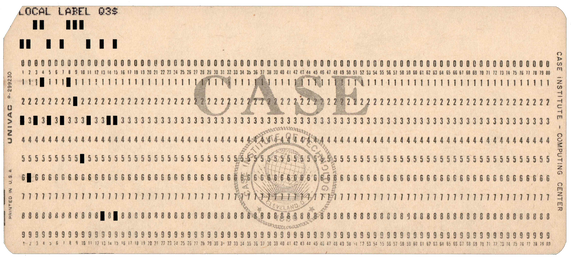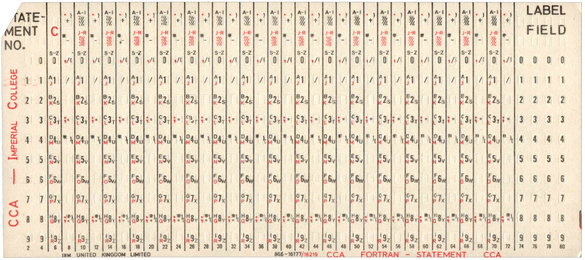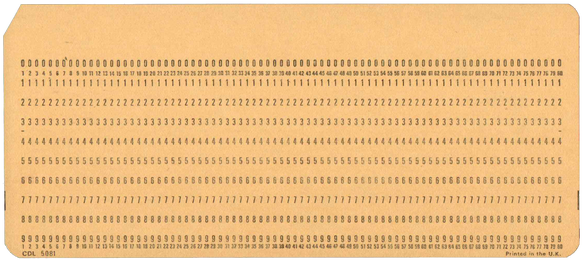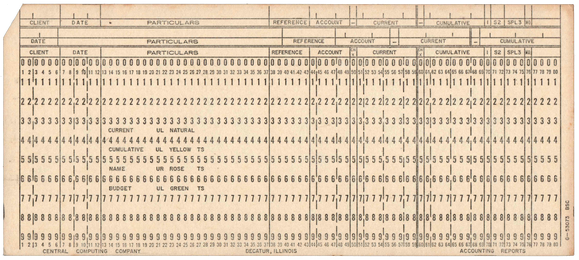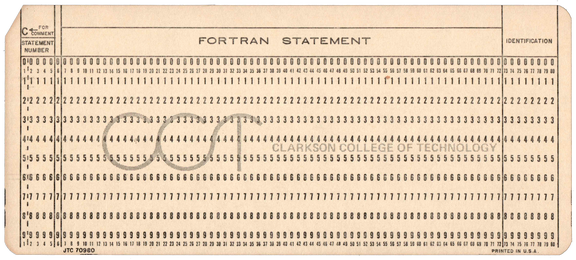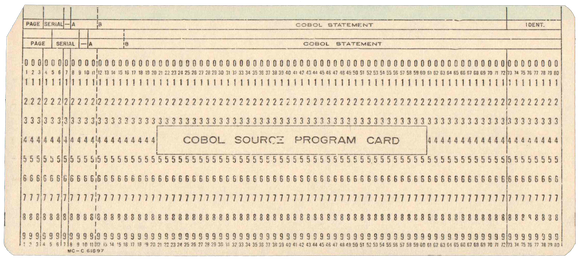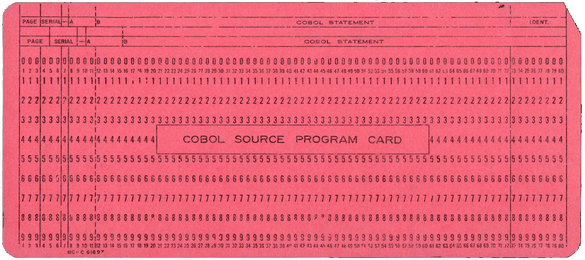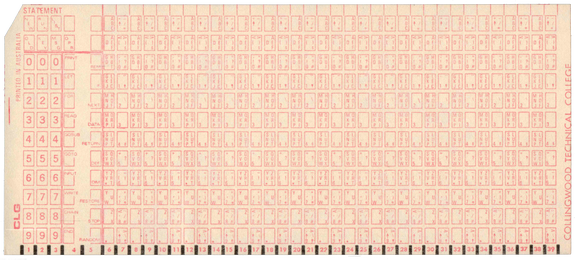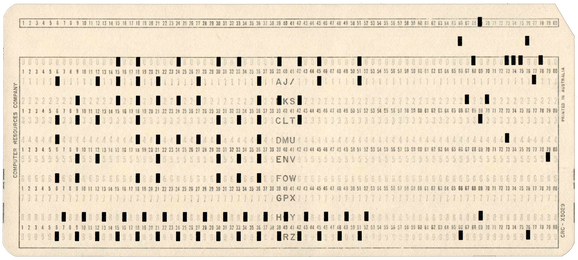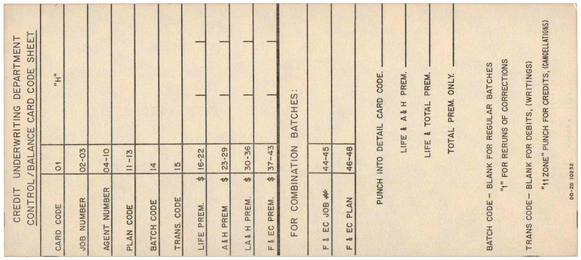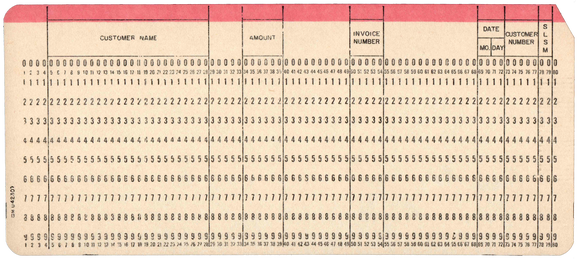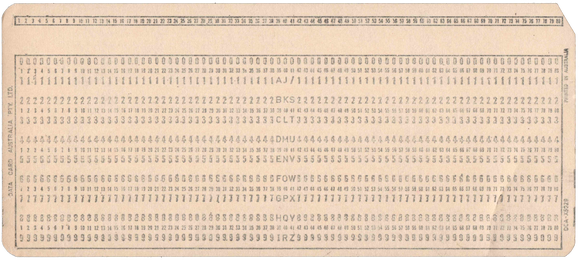A patent for 80 column cards was filed in 1928 on behalf of the Tabulating Machine Company (by this time a part of IBM). These cards were identically dimensioned to the prior 36 and 45-column cards cards, 3¼" x 7⅜" (82.5mm x 187.3mm), but incorporated 80 columns by using oblong or rectangular punched holes rather than circular holes. The additional data density of the 80-column cards was highly desired by business customers who were looking to reduce storage space required for their growing card storage needs.
The 80-column card went on to become the most widely used punched card format, and was used by IBM and other manufacturers until the 1980s. The 80-column card outlived the tabulating machine for which it was designed, and became a staple of the early computer age. 80-column cards were used in thousands of applications, both inside business and out. Many individuals outside the computing space encountered them as accounting systems, payroll systems, electronic sales and logistics systems and a variety of consumer-facing facilities eventually came to use the 80-column card.
The cards were often called “Hollerith Cards” after Herman Hollerith, who developed the first practical punched card data tabulation machines, and the 36 and 45-column cards formats.
